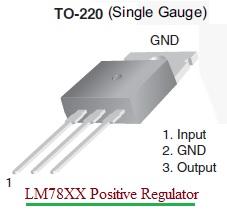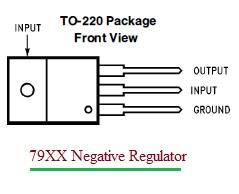78XX vs 79XX: Understanding Voltage Regulator Differences
Advertisement
This article clarifies the differences between 78XX and 79XX voltage regulators, offering a quick comparison for electronics enthusiasts.
78XX Voltage Regulator

Figure 1 (not shown here, but referenced in the original text) depicts the 78XX voltage regulator pin diagram. This particular one is manufactured by Fairchild.
Here’s a rundown of the 78XX regulator’s key features:
- Type: 3-terminal positive voltage regulator.
- Output Current: 1 A
- Output Voltages: Available in various fixed voltages like 5V, 6V, 8V, 9V, 10V, 12V, 15V, 18V, and 24V.
- Protection: Includes thermal overload protection, short circuit protection, and output transistor safe operating area protection.
79XX Voltage Regulator

Figure 1 (again, as referenced in the source) depicts the 79XX voltage regulator pin diagram. This model is manufactured by National Semiconductor.
Let’s look at what the 79XX regulator offers:
- Type: 3-terminal negative voltage regulator.
- Fixed Output Voltages: Typically available in -5V, -8V, -12V, and -15V.
- Output Current: 1.5 A
- Protection: Features thermal, short circuit, and safe area protection.
- Ripple Rejection: High ripple rejection capability.
- Voltage Adjustment: Allows the output voltage to be boosted above the preset value using a resistor divider.
Conclusion
In short, the primary difference is that the 78XX series is a positive voltage regulator, while the 79XX series is a negative voltage regulator.

(../../assets/78xx-voltage-regulator-circuit-diagram.jpg)
Advertisement
 RF
RF


